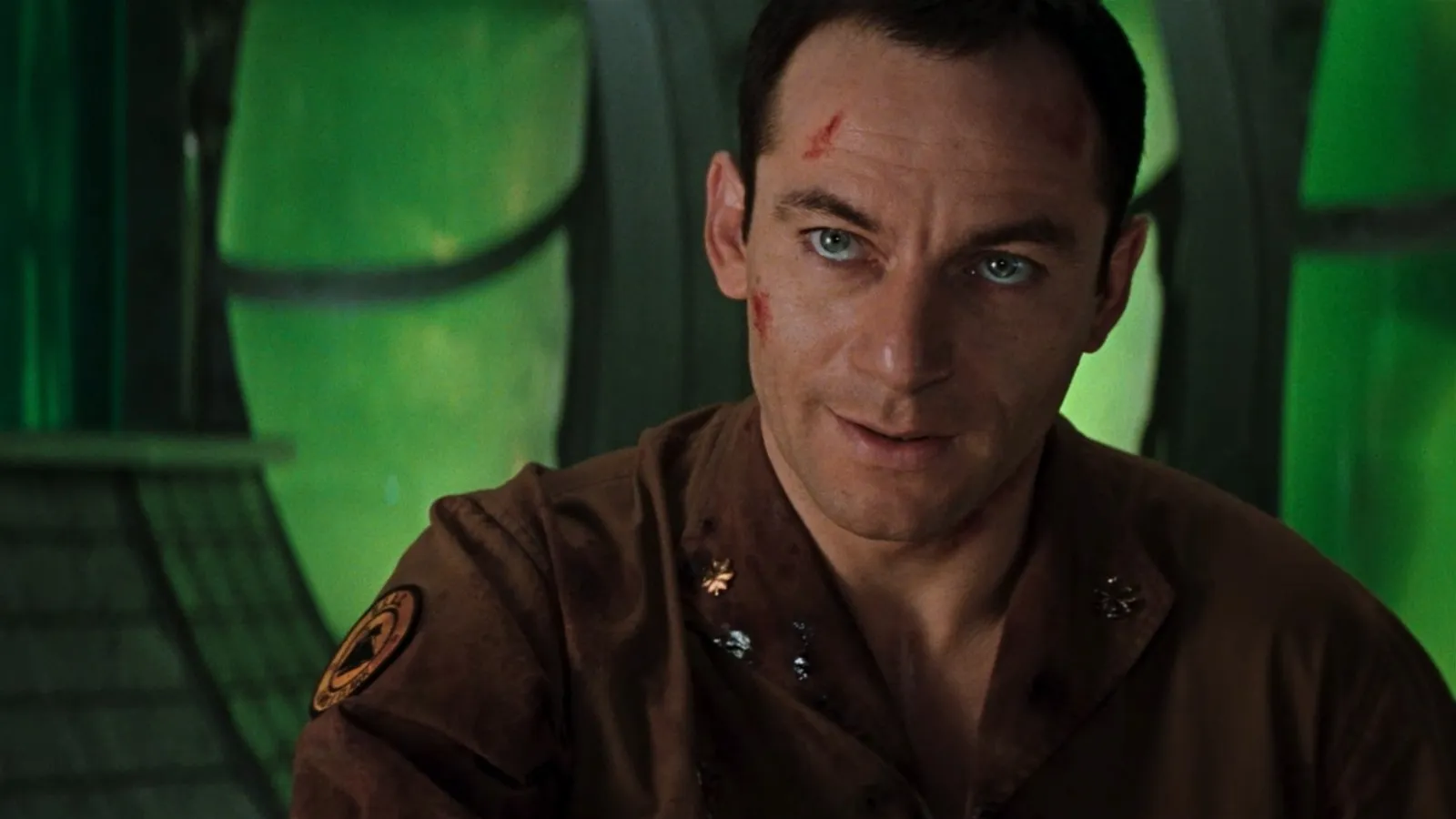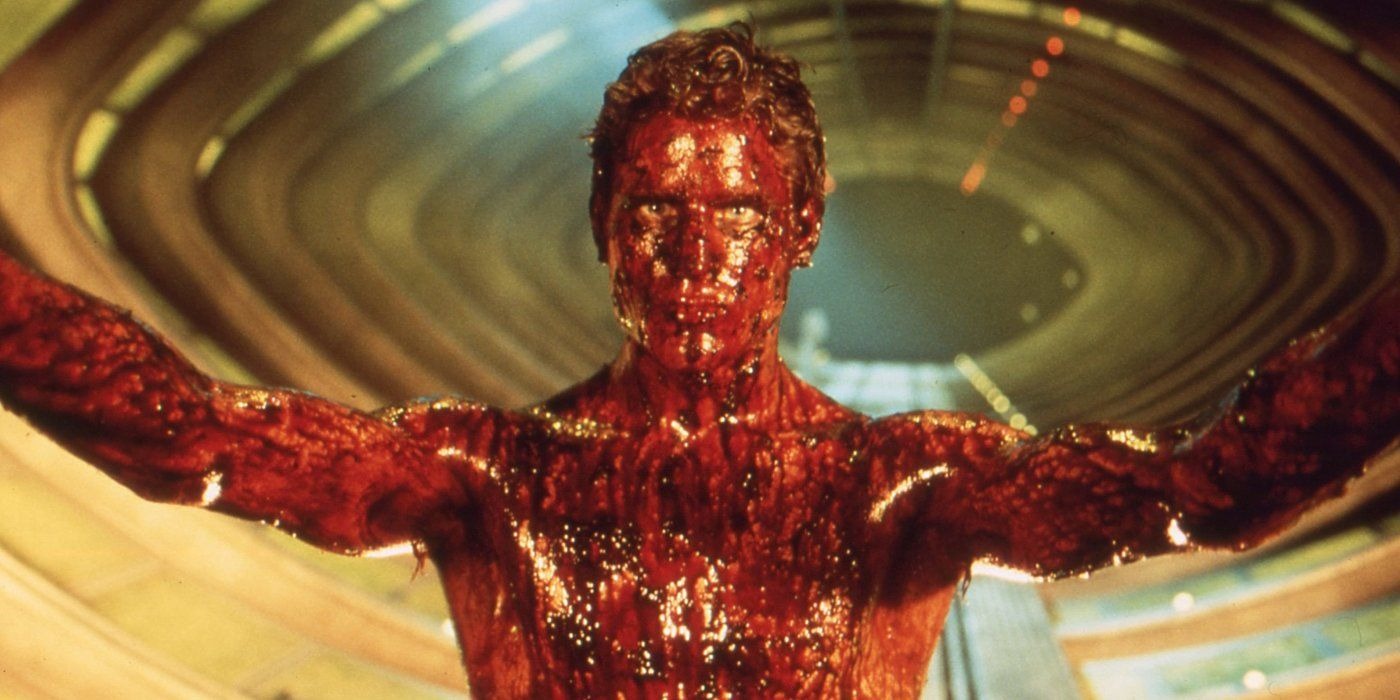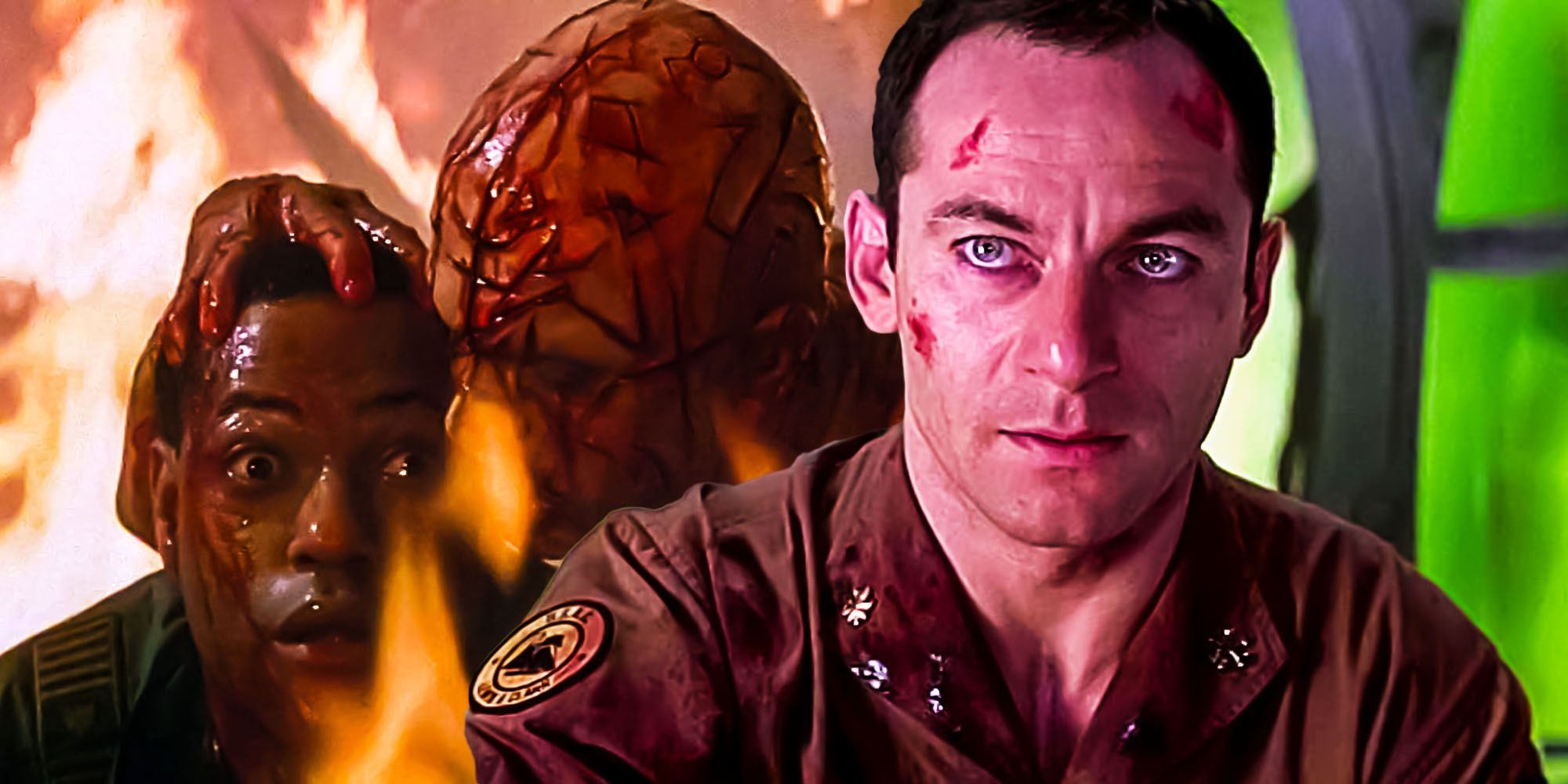In Event Horizon, a deep-space rescue mission to save a ship that went missing beyond Neptune leads to a shocking discovery—the vessel isn’t just bending space and time, but has opened a direct gateway to hell. The ship’s function mirrors that of the Ouija board in The Exorcist (1973).
The two reveal hidden doors that unleash evil consequences for those who open them. What sets Event Horizon apart is how it ties humanity’s long-standing obsession with hell to the cold, futuristic backdrop of space travel.

The spiritual themes in Event Horizon connect directly with films like Rosemary’s Baby (1968), where fears of the “death of God” create a path for Satan to enter modern society. While the movie does not focus heavily on spirituality, it still weaves a strong sense of dread surrounding hell.
In both the Event Horizon and the rescue ship Lewis and Clark, spirituality is absent, yet the fear of damnation persists throughout. The film plays with the contrast between ancient concepts of good and evil, represented through the space age setting, making the connection between past and present more intriguing.
The naming of the two ships itself ties into history. Captains Lewis and Clark mapped the American West in the 1800s, while the term event horizon, coined in the 1950s, is used to describe the boundaries of black holes.
Additionally, despite Latin being considered a “dead” language, someone aboard the spaceship in 2040 speaks it—though it is used wrongly, as a mistranslation becomes a key plot element.
What Hell Looks Like
The visual representation of hell in Event Horizon draws heavily on medieval imagery, portraying bodies twisted in torment and the horrors of hell itself. The first glimpse of this comes when the crew of the missing ship is seen in a video recording, apparently trapped in hell (or driven mad by their experiences).
Later, Dr. Weir (Sam Neill) reveals to Captain Miller (Laurence Fishburne) what the hell looks like in a series of disturbing shots. This sequence offers a sneak peek into hell, but it’s clear that the crew members aboard the Event Horizon are experiencing it firsthand.
Released in 1997, Event Horizon arrived at a time when society was gripped by media fears of the digital Y2K bug and other apocalyptic scenarios, making it especially fitting for the film’s themes of hell and the end of the world.
These anxieties about the future resonate in the film’s chilling portrayal of a journey to an unknowable, destructive force.
Who Dies and Why?
The Event Horizon ends up being a ship that’s accidentally sent to hell, causing it to become possessed and driving its crew to kill one another. As the rescuers arrive, they too fall under the influence of the ship’s dark power. The film follows a pattern where certain characters die based on past guilt or wrongdoings.
Justin (Jack Noseworthy) and Smith (Sean Pertwee) are casualties of unfortunate timing. Justin is mesmerized by the gravity drive, which sends him into a catatonic state, leading to his eventual suicidal behavior.
Smith is killed by Dr. Weir when the ship’s influence takes hold. However, the deaths of Captain Miller, Peters (Kathleen Quinlan), and Dr. Weir are connected to their guilt. Miller sacrifices himself because of his past decision to leave a man behind during a fire.
Dr. Weir is haunted by his inability to prevent his wife’s suicide. Peters struggles with guilt over her broken marriage and abandoned child. Each death is an act of atonement for their past sins, highlighting the theme of facing the consequences of one’s actions.
Liberate Tutame Ex Inferis
D.J. (Jason Isaacs) finds himself caught in a moment of terrible luck when he misinterprets the distress call.
Instead of the message saying “save me,” it says “save yourself from hell” (liberate tutame ex inferis), which directly correlates with the inscription above the gates of hell in Dante’s Inferno: “Abandon all hope, ye who enter here.”
This phrase serves as a chilling reminder of the ship’s descent into hell and the vast, destructive nature of black holes. The film uses these black holes as a metaphor for hell: both are dark, vast and offer no escape.
D.J.’s fate, which mirrors the gruesome end of The Silence of the Lambs, is a fitting, horrifying reminder of the price to pay for venturing into hell.
Who Survives – Or Do They?
The survivors in Event Horizon are those who do not carry the burden of past guilt. Starck (Joely Richardson) and Cooper (Richard T. Jones) manage to rescue Justin, destroy the ship’s demonic influence, and escape.
But when Starck wakes up from stasis, she believes they have been rescued, only to find that Dr. Weir has returned to try and kill them once more. Just when it seems they’ve been saved, a final twist leaves the question of whether they truly escaped or if the cycle is doomed to repeat itself.

This ending mirrors the opening scene, where Dr. Weir dreams of his wife’s death, only to later wake up and realize the horrors ahead. The ambiguity of whether they escaped or not taps into the horror genre’s tradition of open-ended conclusions.
The final twist also mirrors the concept of an event horizon—crossing a point of no return, where escape is no longer possible.
Hell and Horror Movies
Event Horizon shares several common themes with other horror films. Grief plays a central role, especially in a genre that often grapples with death and the unknown.
The film looks into the loss of sanity, as seen through the gradual madness of the crew, similar to Sunshine or The Exorcist, where characters are caught between possession and insanity. The film’s setting, in deep space, draws parallels with other horror films set in confined spaces, like The Shining or 1408.
Here, the Event Horizon ship itself acts as a nightmarish version of the caretaker, embodying the dark forces at work. The crew’s interactions are tinged with references to fairy tales, where poor choices lead to disastrous outcomes.
This theme is echoed in other films like Alien, where the spaceship is named “Mother,” creating a metaphor for the family dynamics in the crew. In Event Horizon, the crew starts with a mission of rescue, only to be undone by the ship’s supernatural power.
Like black holes, there is no return from the ship’s hellish influence, making it clear that some forces in the universe offer no escape.



